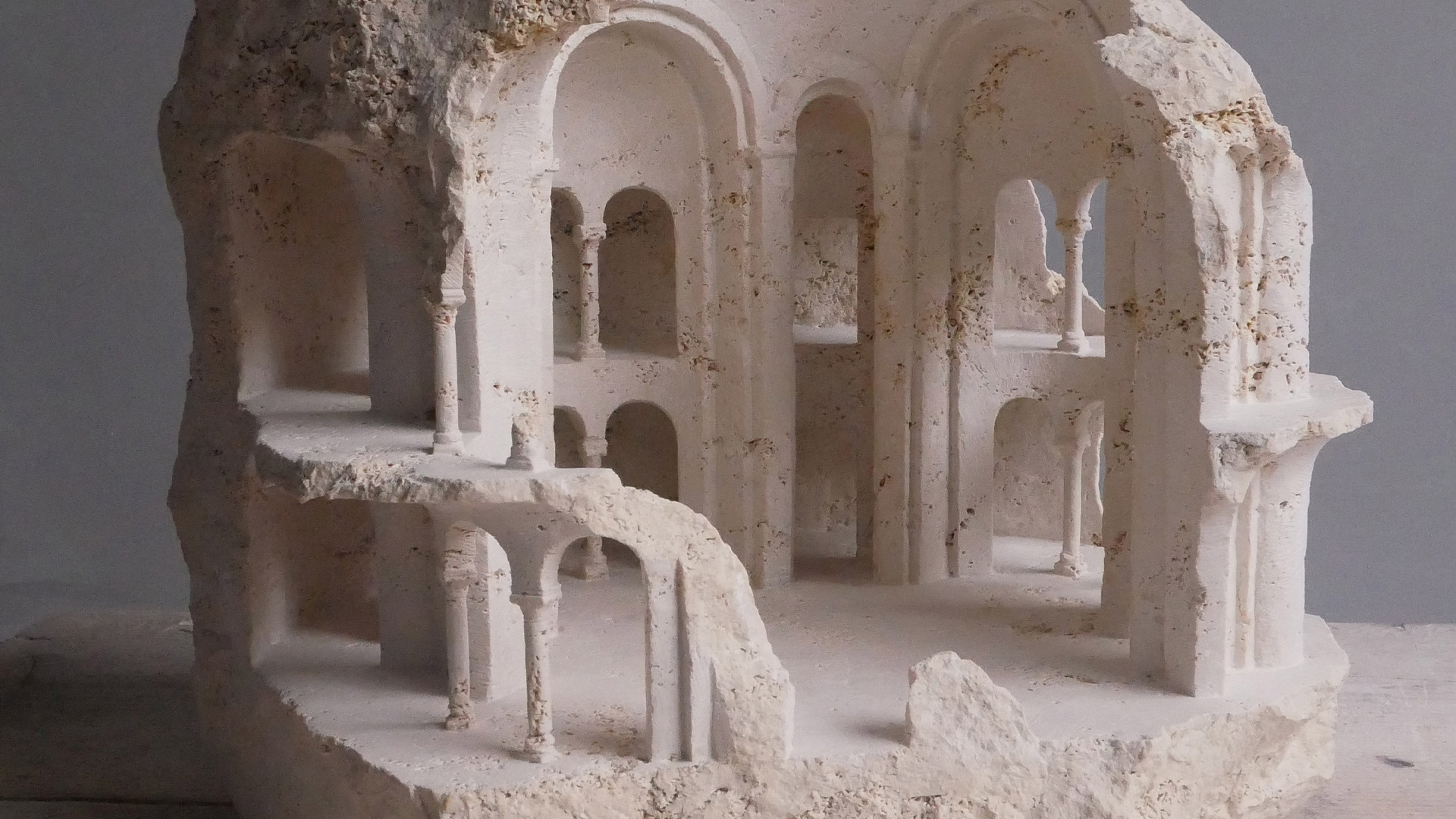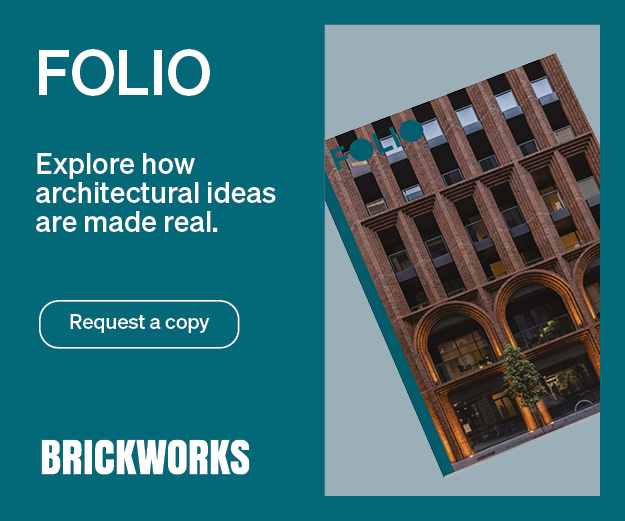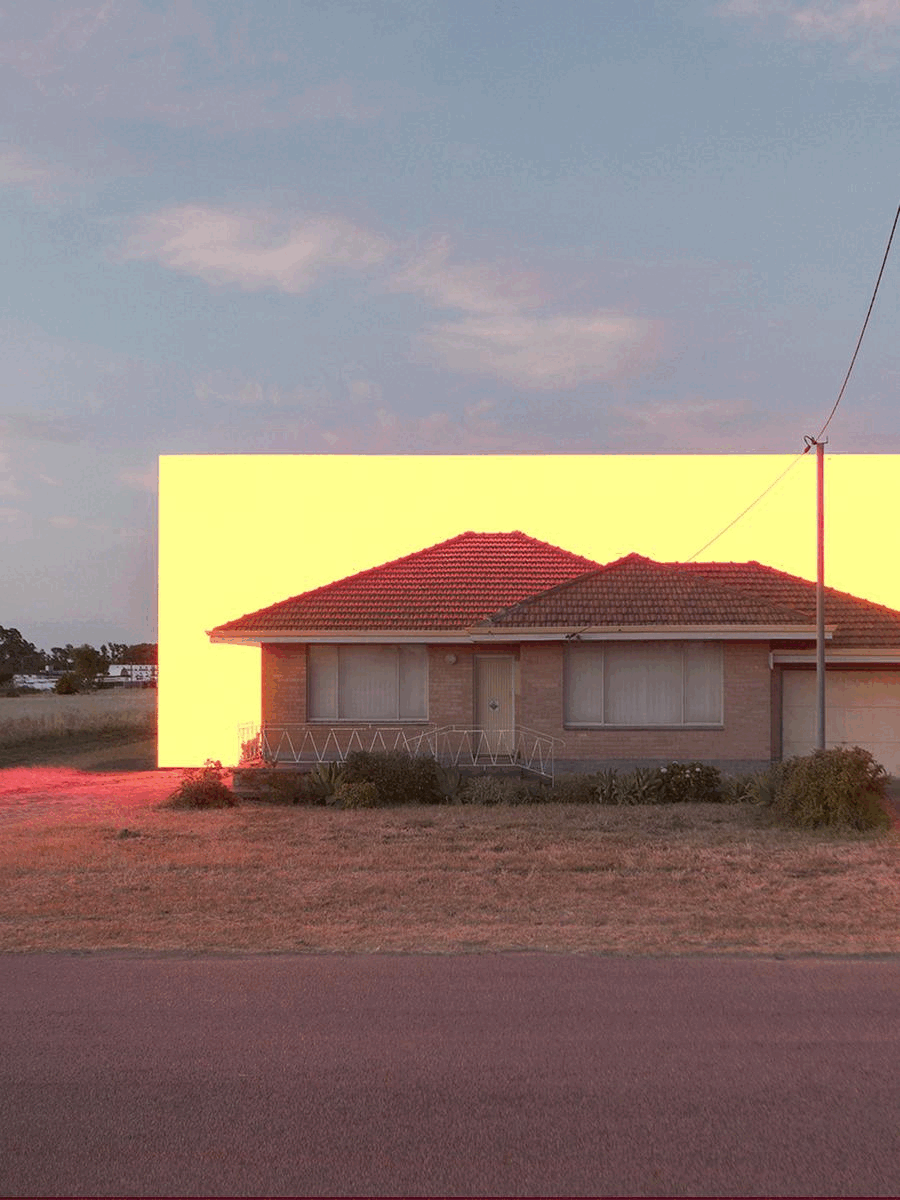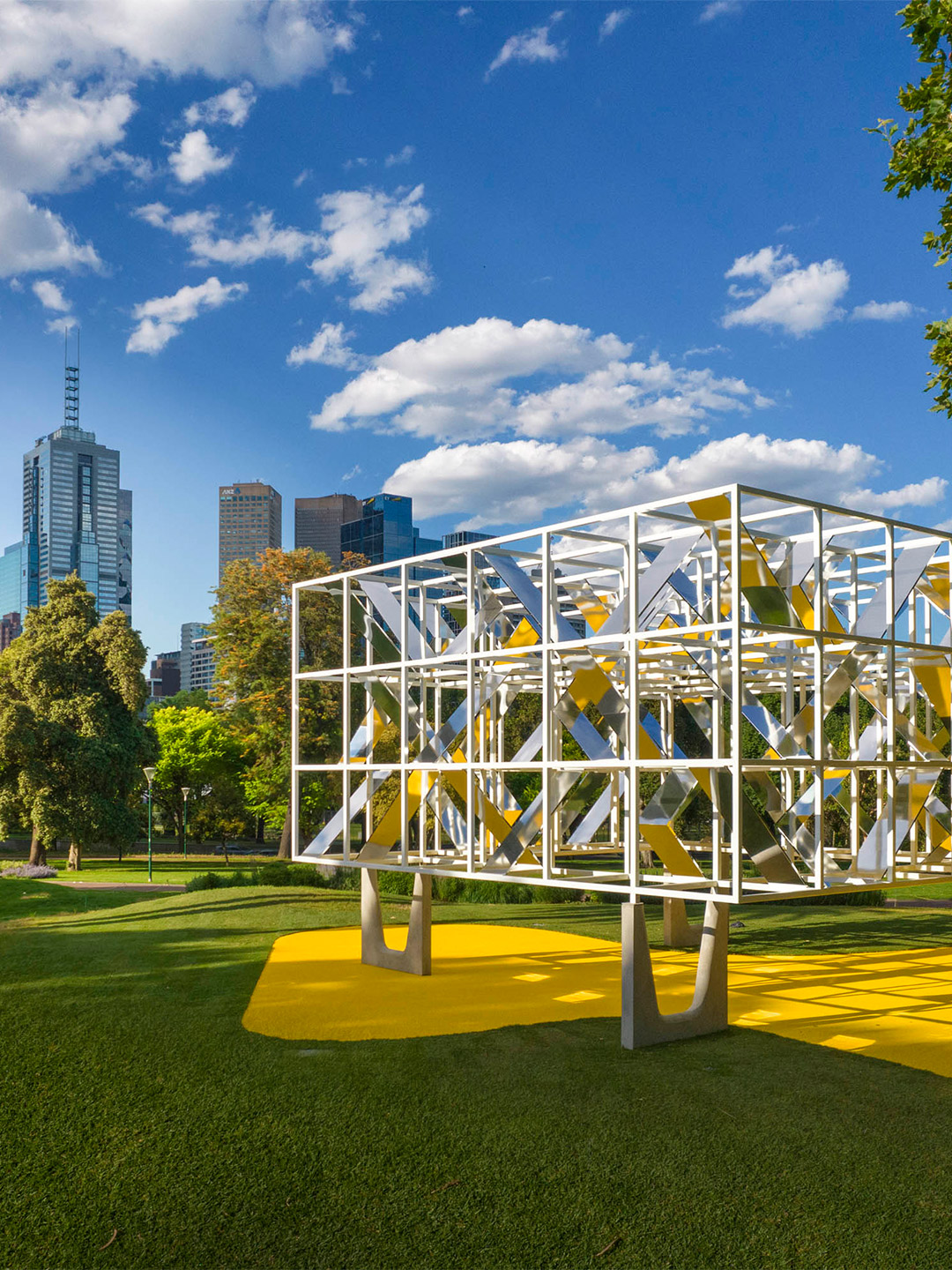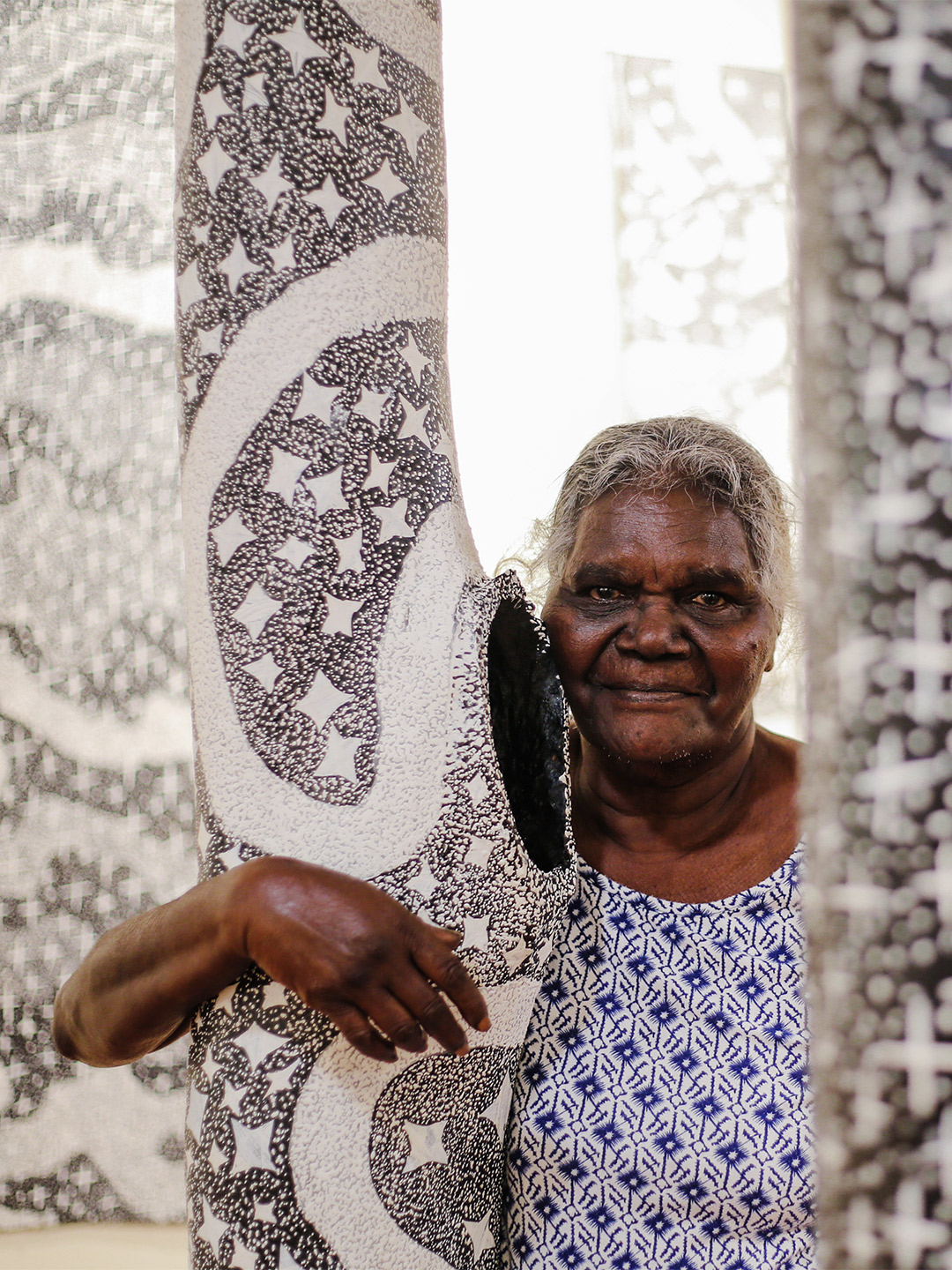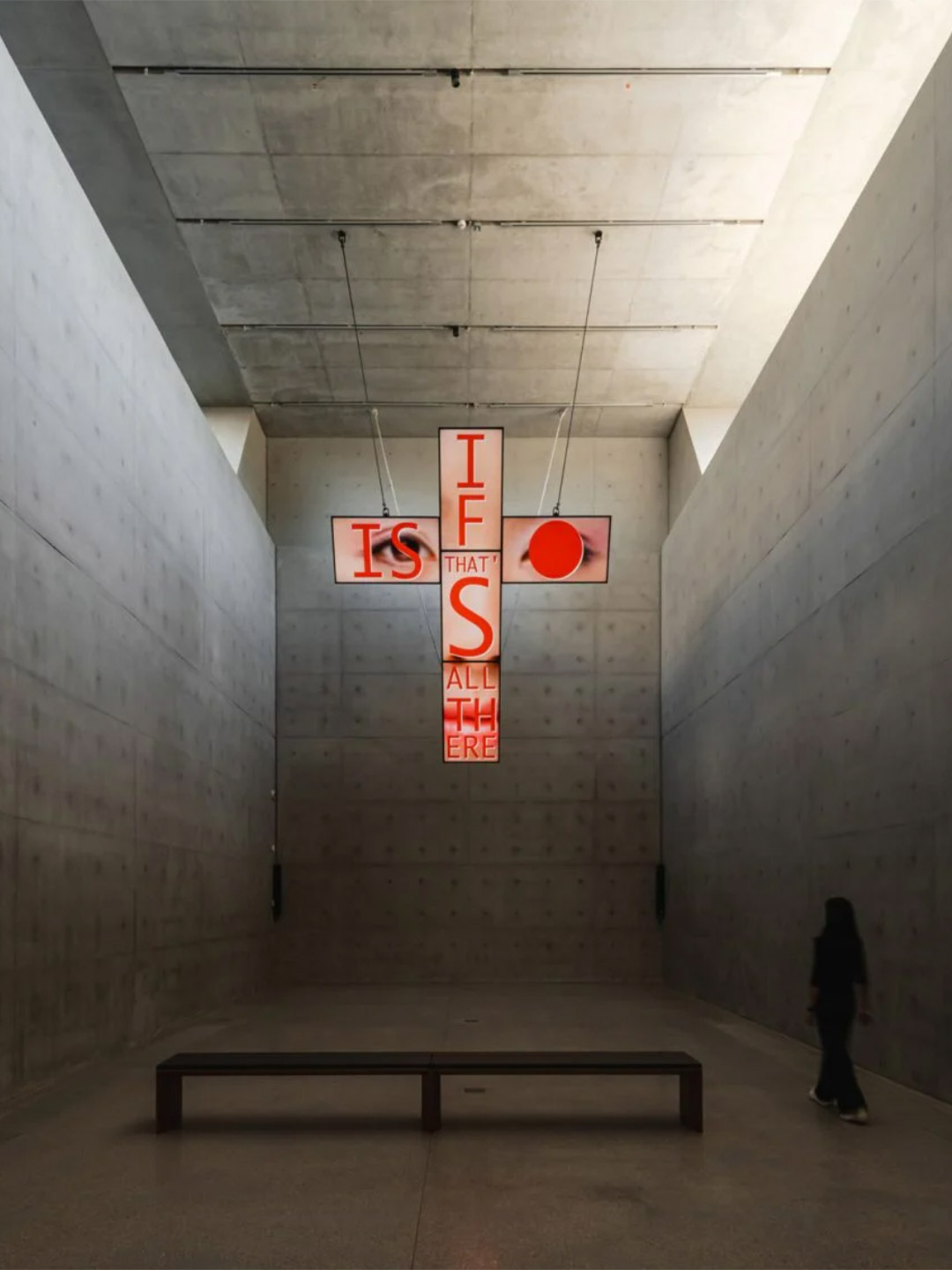In 1984, sculptor Matthew Simmonds graduated with an honours degree in history of art from the University of East Anglia, specialising in the art and architecture of the medieval period. But it wasn’t until he’d spent several years working as an illustrator that he considered aligning his formal education with a stone-carving career. “I didn’t think about working with stone until 1990,” he says, casting his mind back to that time. “On a visit to Chichester Cathedral in the South of England I saw a display about the work of the stonemasons restoring the building and in a sort of epiphany knew that this was what I wanted to do with my life.”
Merging this lightbulb moment with his life-long fascination of stone buildings, Matthew decided to study architectural stone carving at Weymouth Technical College in the UK’s south. This led to gratifying work on the restoration of several major English monuments, including Westminster Abbey in London and the cathedrals of Salisbury and Ely. It wasn’t until 1997, however, when he transferred to Pietrasanta in Italy, that Matthew tightened his passion and specialised in the fine-art of classical marble ornament.
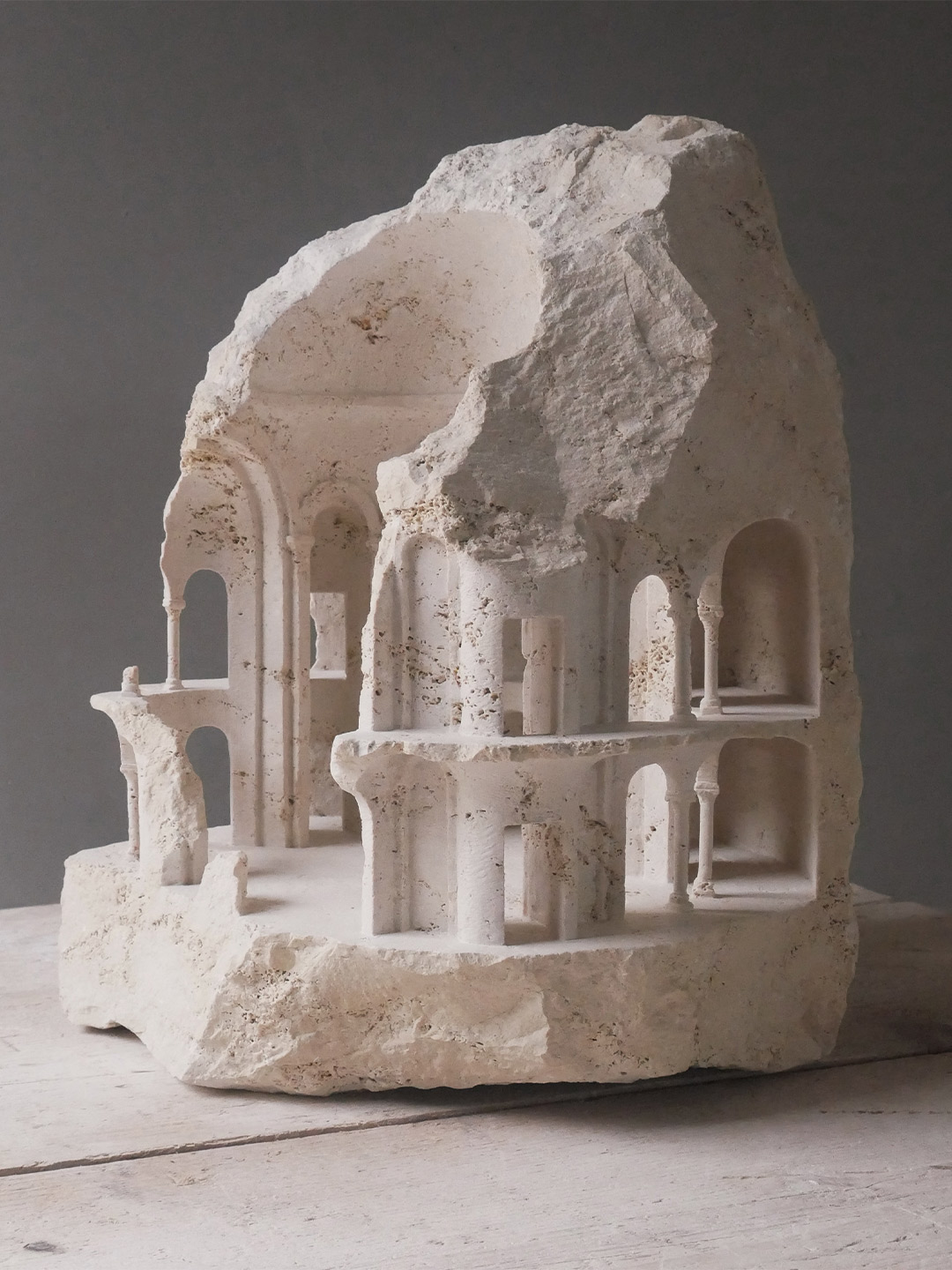
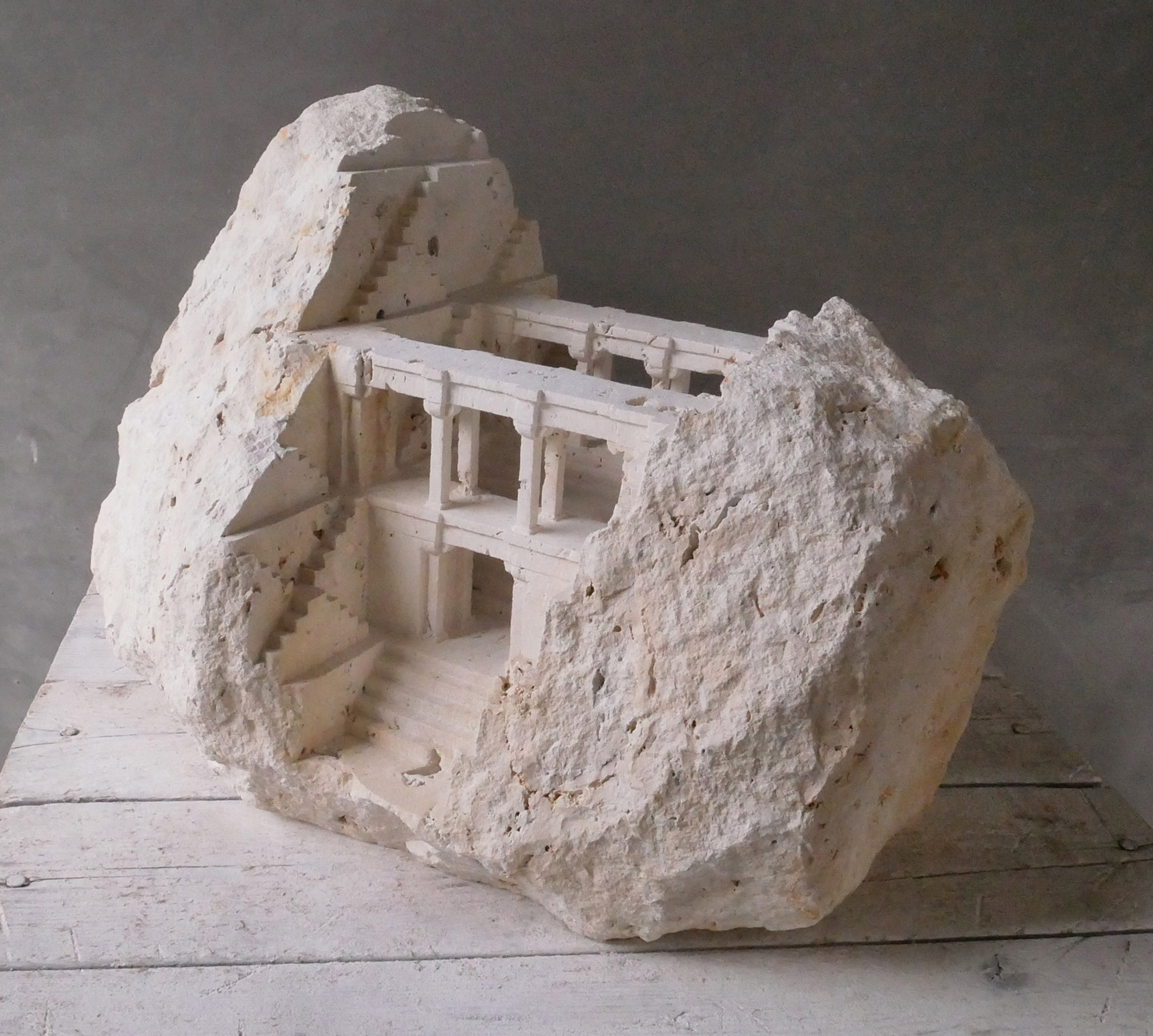
Rock star Matthew Simmonds carves intricate buildings into solid stone
After honing his skills, Matthew says he gained his first recognition as a sculptor two years later when he won first prize at the second International Sculpture Symposium of Verona. Since then, he has participated in several sculpture symposia worldwide and has exhibited work in Europe, China, the UAE, Australia and the USA. Public and private commissions such as religious monuments and detail-rich chimneypieces have also been a significant contributor to his body of work. Including a piece titled Essay in Baroque Space II that would eventually make its way to the luxury cruise ship MS Nieuw Statendam.
Drawing on skills learnt as an architectural stone carver, Matthew’s small-scaled sculptures adopt stone architecture – particularly sacred stone architecture – as a central theme. “I’m mostly interested in religious architecture, and the sense of sacred spaces that this can invoke,” he says. “I have always been more inspired by common heritage than the work of individual artists. I am also inspired by the qualities of the material itself and the potential that exists in a solid, often once living, material where the creative process involves only the removal of material.”
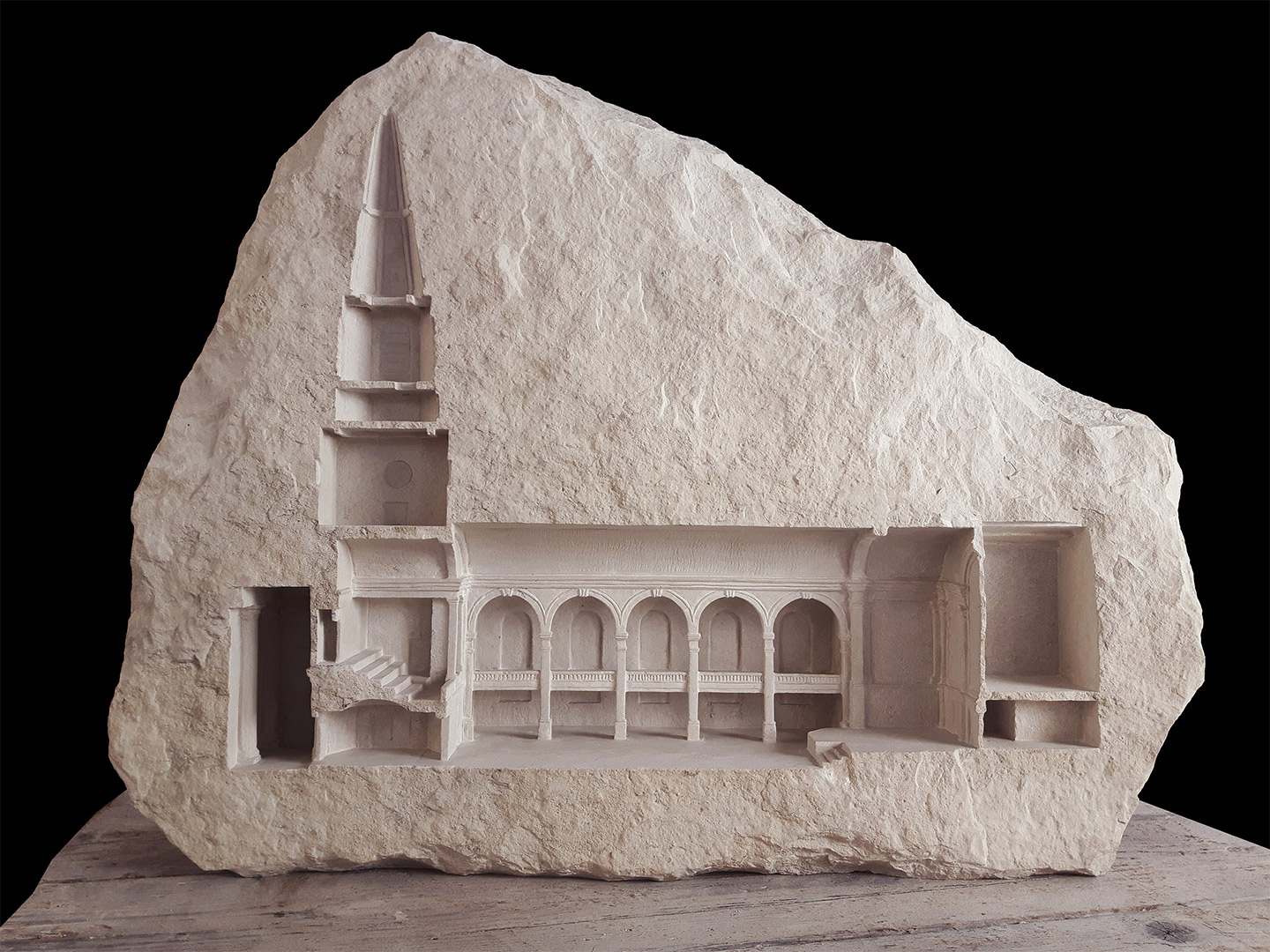
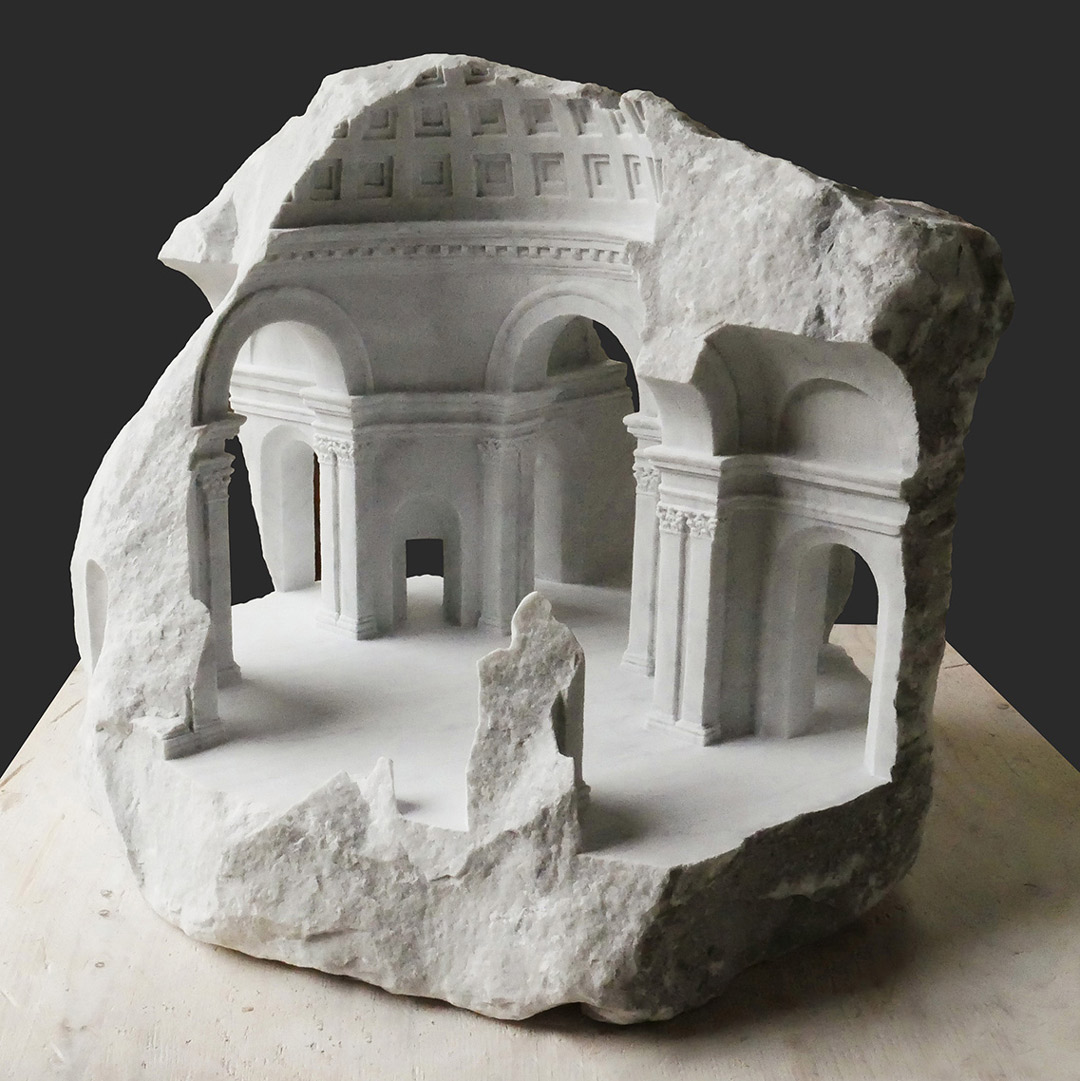
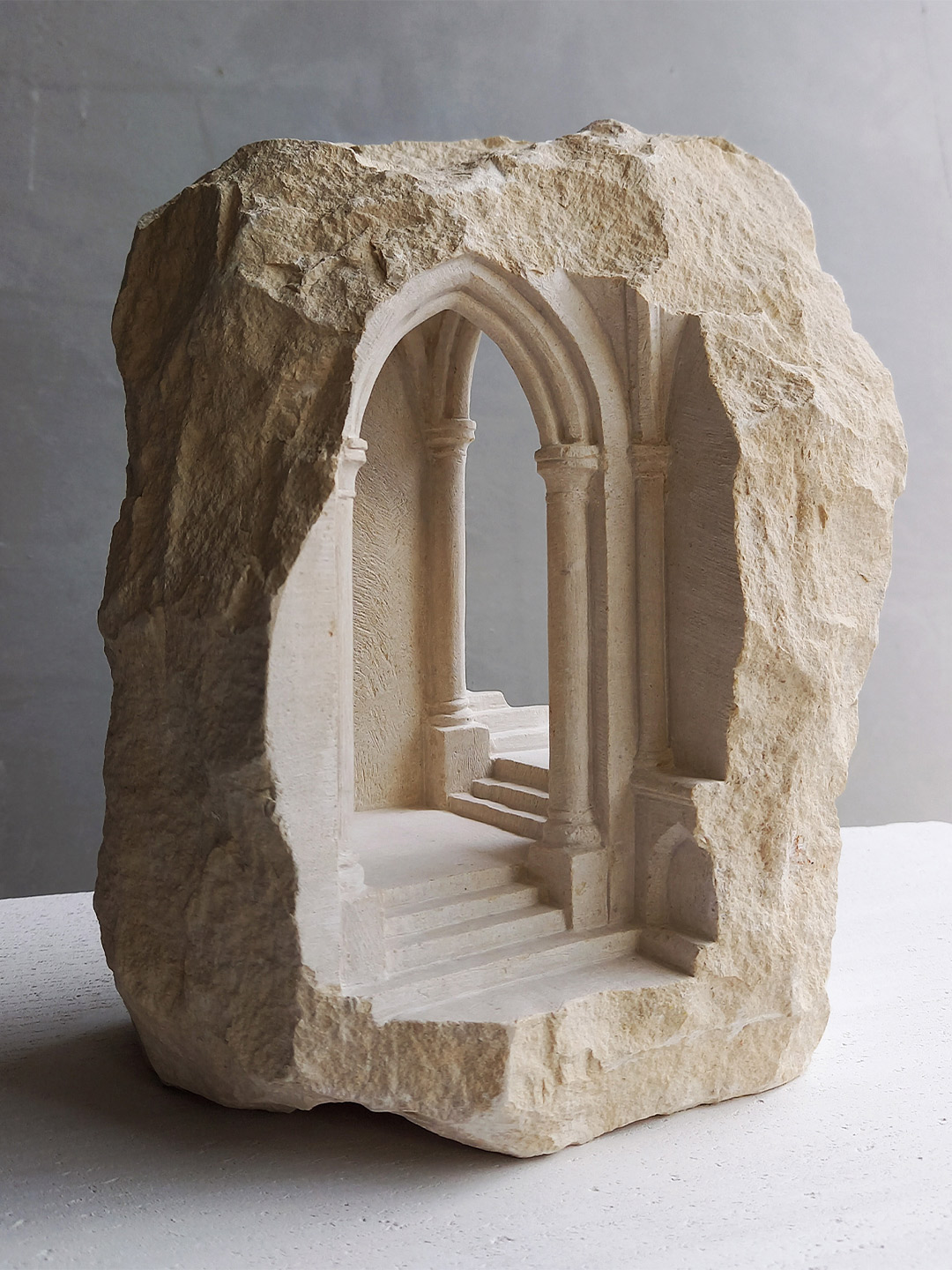
As Matthew carves into solid boulders, he reveals intricate worlds where the changing viewpoint of the observer plays a strong role. Themes of positive and negative space, the significance of light and darkness and the relationship between nature and human endeavour are all explored through his high-precision work. “I have always been drawn to fine detail since I started to work with stone,” he says. “The techniques I use are based on traditional methods, perhaps sometimes pushed a little further towards their limits than normal in terms of fineness of detail.”
The sculptor uses a combination of traditional hand tools and hand-held pneumatic grinding and cutting instruments to carefully chisel his works. The pneumatic tools (powered by air) are employed first to “rough out” the designs. Laborious hand techniques follow in order to refine the detail. “Patience is important, as is the desire to achieve a certain goal,” he insists, especially when works can take up to eight months to complete.
Classic limestone and marble sourced from Italy are Matthew’s stones of choice, “partly because of the fine detail that they allow and partly because so many of the buildings that inspire me are made from these materials,” he explains. But he’s also open to working with new materials. Since moving to Denmark with his family seven years ago, Matthew has begun a new chapter sculpting in faxe, a local coralline stone that shares similarities with Italian travertine.
Patience is important, as is the desire to achieve a certain goal.
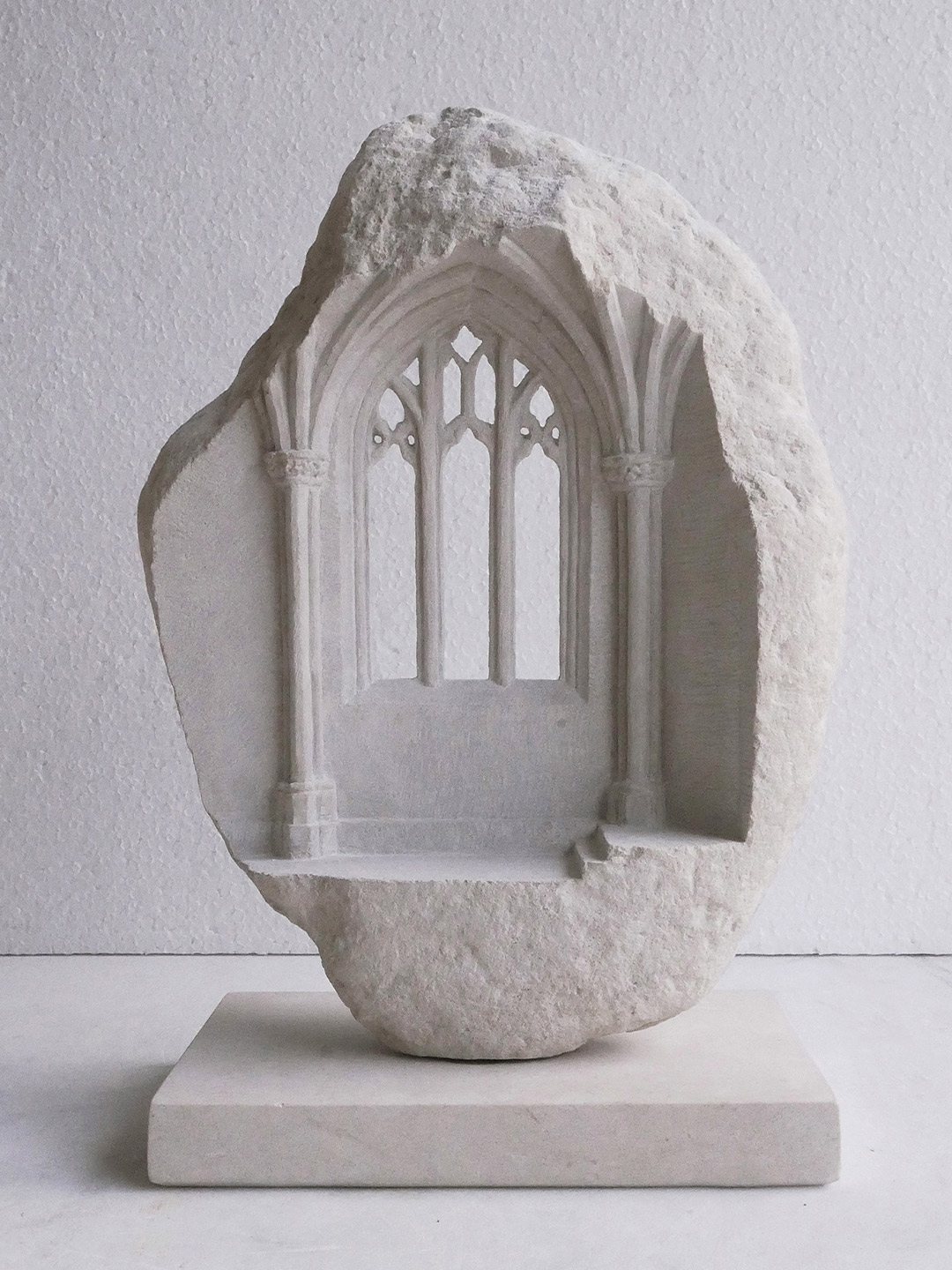
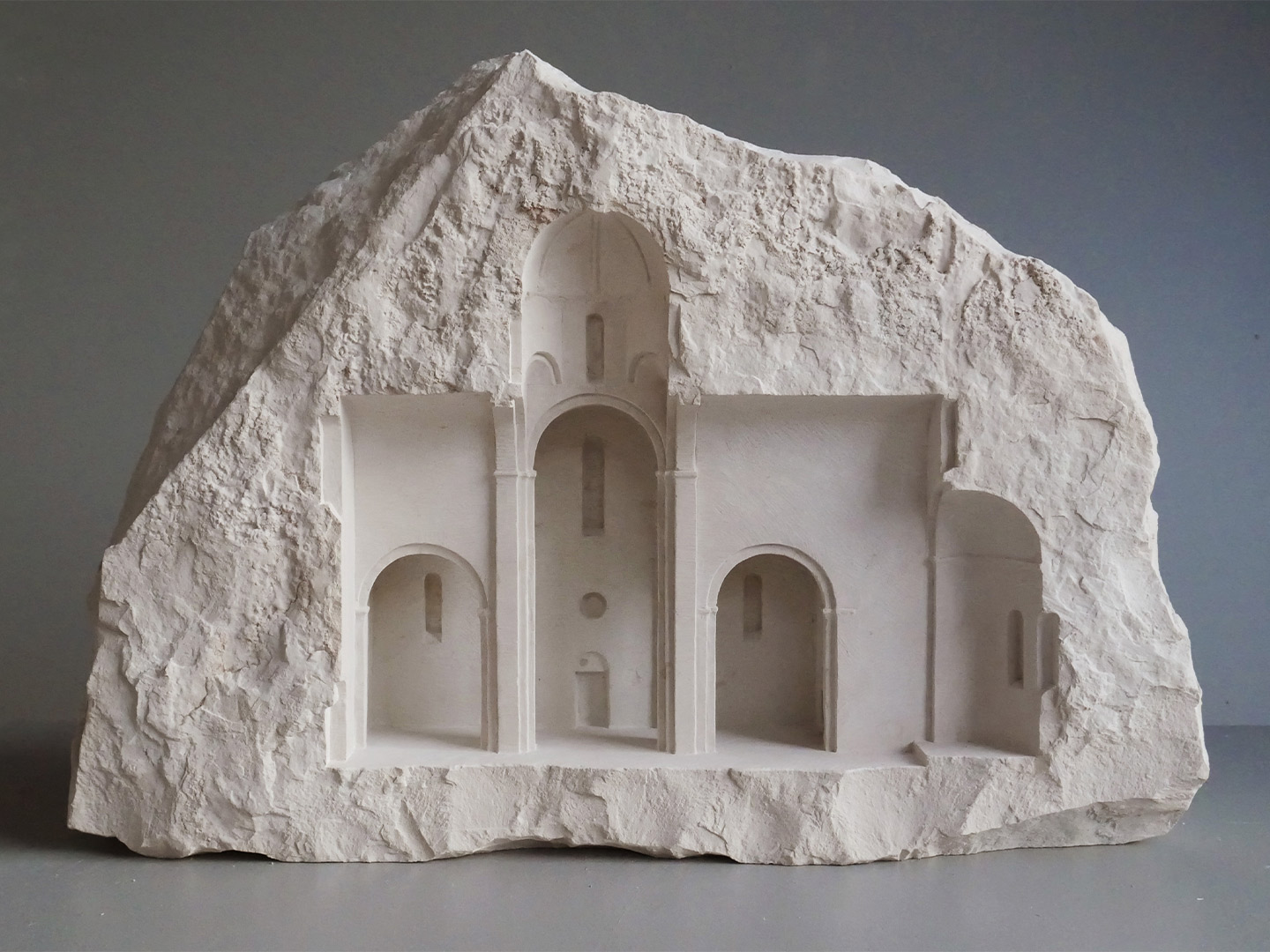
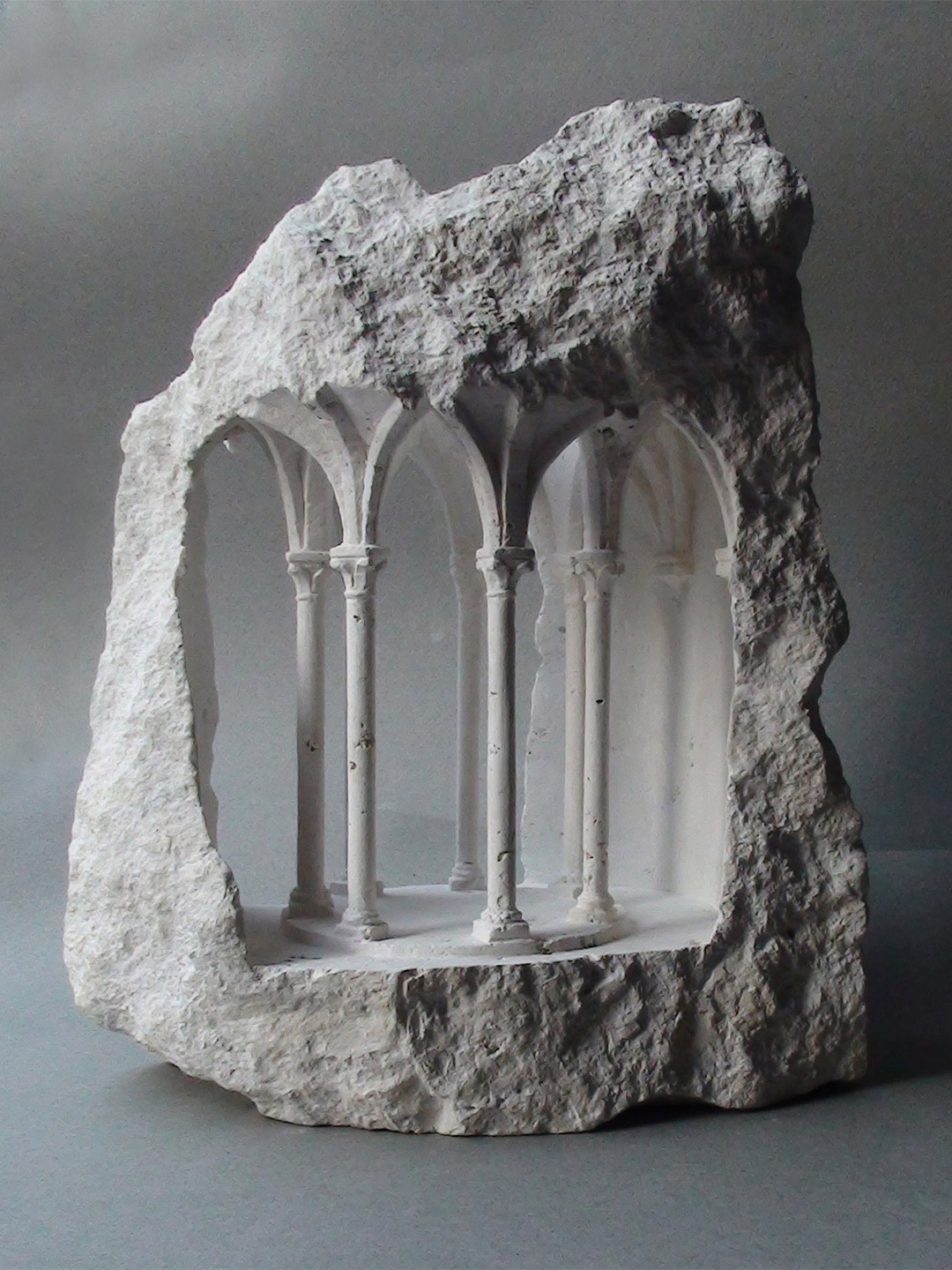
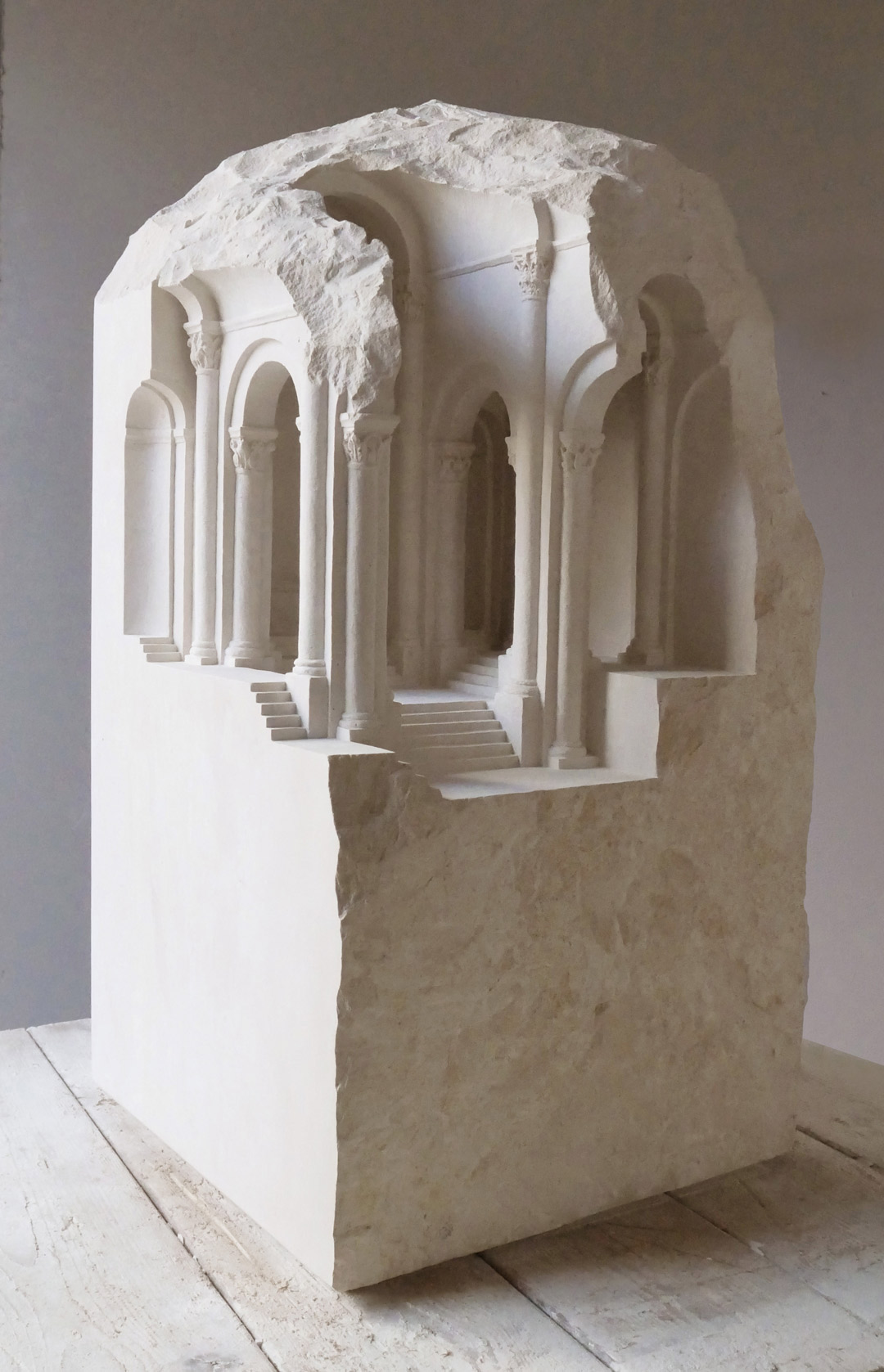
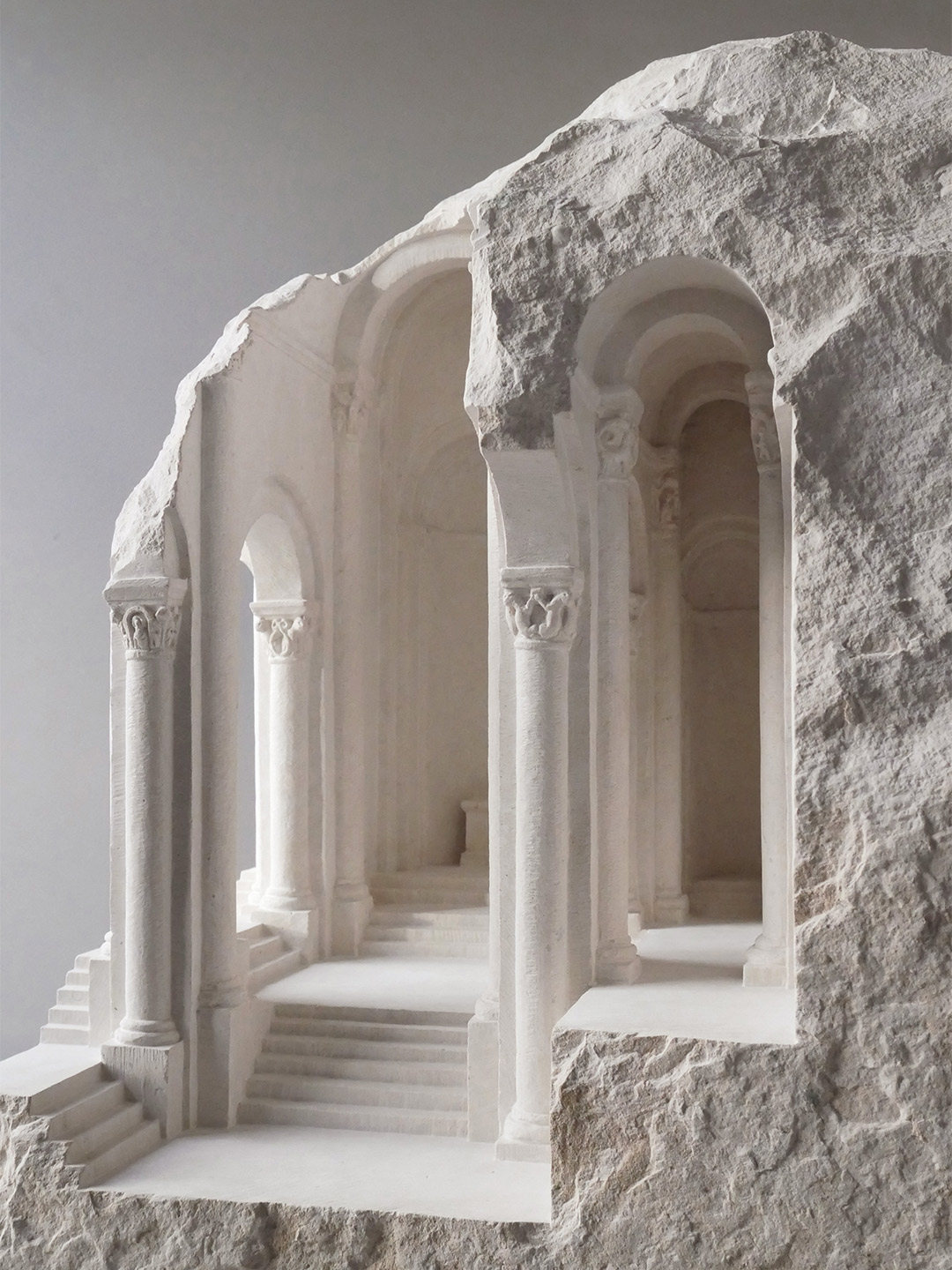
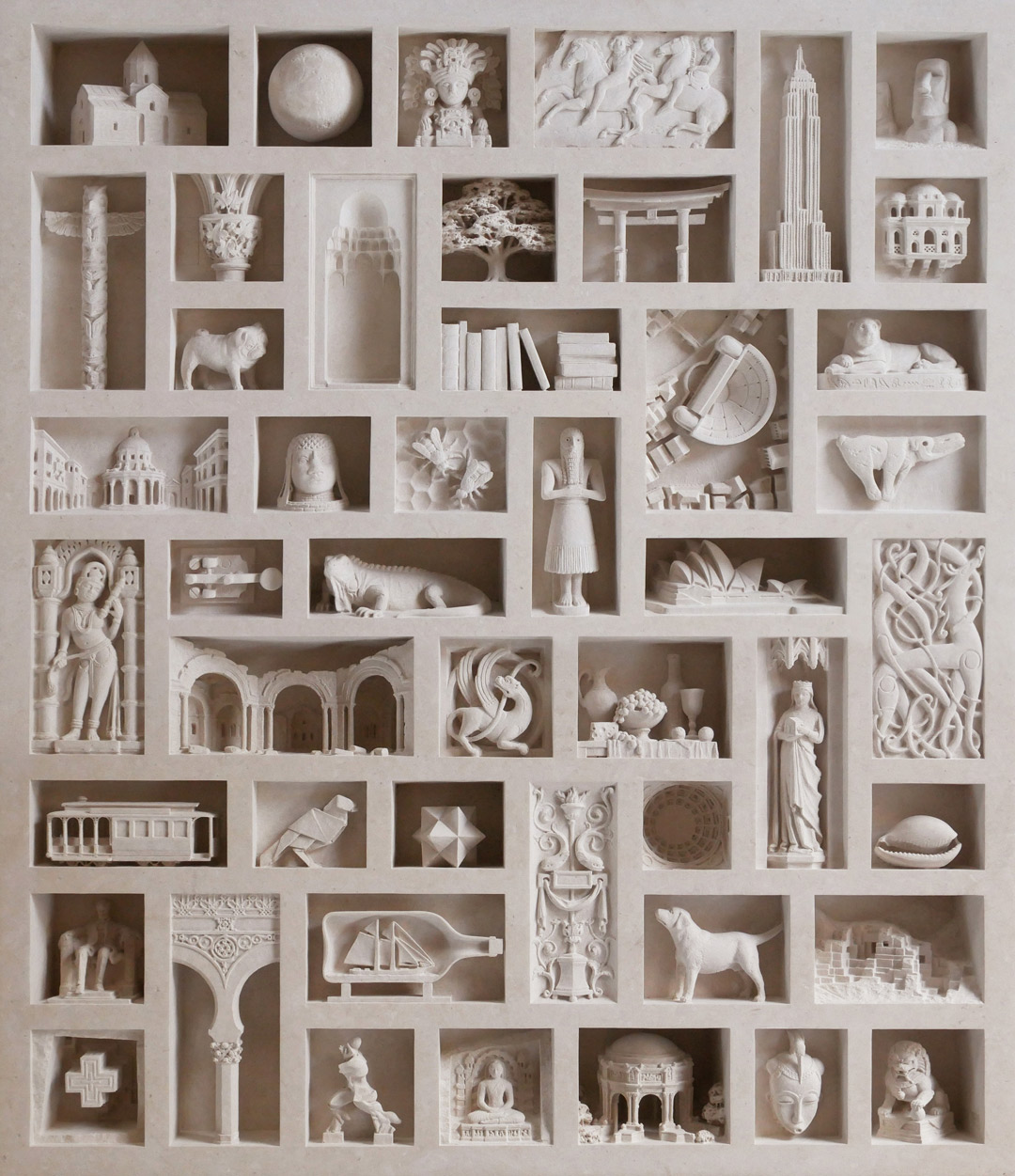
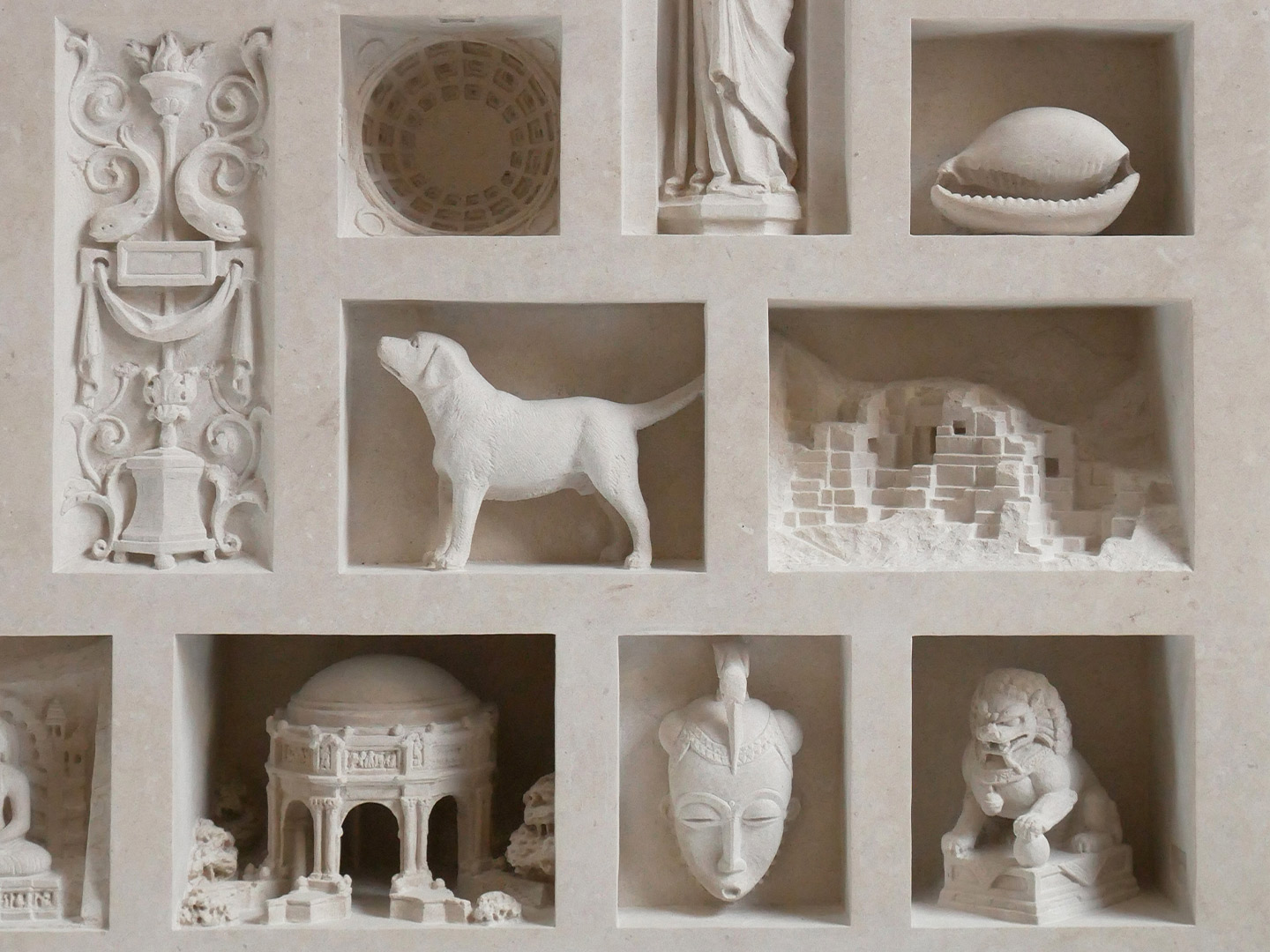
Read up on more artists like Matthew Simmonds and check out the latest architecture and design highlights. Plus, subscribe to receive the Daily Architecture News e-letter direct to your inbox.
